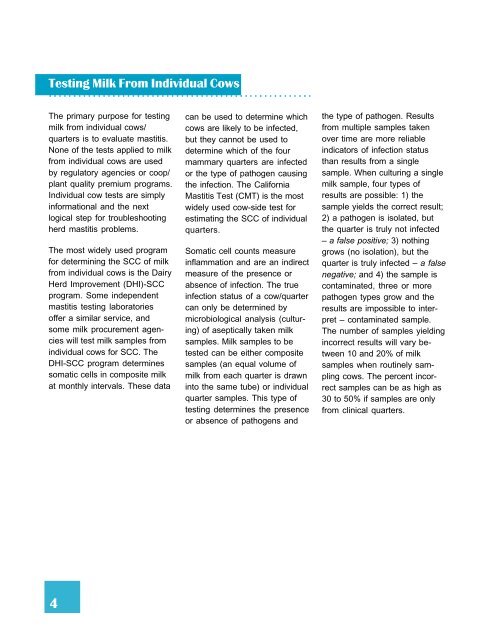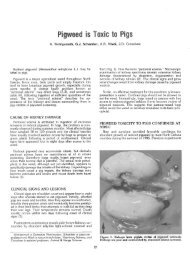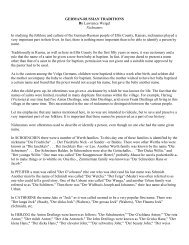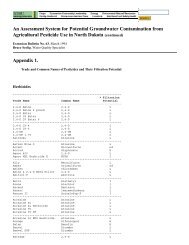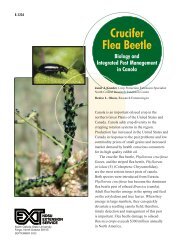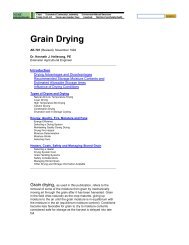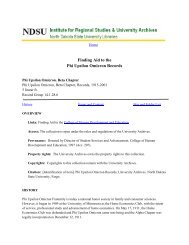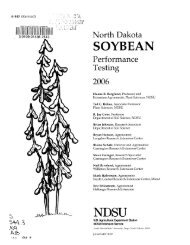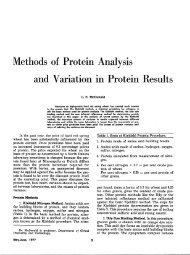Mastitis Control Programs: Milk Quality Evaluation Tools for Dairy ...
Mastitis Control Programs: Milk Quality Evaluation Tools for Dairy ...
Mastitis Control Programs: Milk Quality Evaluation Tools for Dairy ...
You also want an ePaper? Increase the reach of your titles
YUMPU automatically turns print PDFs into web optimized ePapers that Google loves.
Testing <strong>Milk</strong> From Individual CowsThe primary purpose <strong>for</strong> testingmilk from individual cows/quarters is to evaluate mastitis.None of the tests applied to milkfrom individual cows are usedby regulatory agencies or coop/plant quality premium programs.Individual cow tests are simplyin<strong>for</strong>mational and the nextlogical step <strong>for</strong> troubleshootingherd mastitis problems.The most widely used program<strong>for</strong> determining the SCC of milkfrom individual cows is the <strong>Dairy</strong>Herd Improvement (DHI)-SCCprogram. Some independentmastitis testing laboratoriesoffer a similar service, andsome milk procurement agencieswill test milk samples fromindividual cows <strong>for</strong> SCC. TheDHI-SCC program determinessomatic cells in composite milkat monthly intervals. These datacan be used to determine whichcows are likely to be infected,but they cannot be used todetermine which of the fourmammary quarters are infectedor the type of pathogen causingthe infection. The Cali<strong>for</strong>nia<strong>Mastitis</strong> Test (CMT) is the mostwidely used cow-side test <strong>for</strong>estimating the SCC of individualquarters.Somatic cell counts measureinflammation and are an indirectmeasure of the presence orabsence of infection. The trueinfection status of a cow/quartercan only be determined bymicrobiological analysis (culturing)of aseptically taken milksamples. <strong>Milk</strong> samples to betested can be either compositesamples (an equal volume ofmilk from each quarter is drawninto the same tube) or individualquarter samples. This type oftesting determines the presenceor absence of pathogens andthe type of pathogen. Resultsfrom multiple samples takenover time are more reliableindicators of infection statusthan results from a singlesample. When culturing a singlemilk sample, four types ofresults are possible: 1) thesample yields the correct result;2) a pathogen is isolated, butthe quarter is truly not infected– a false positive; 3) nothinggrows (no isolation), but thequarter is truly infected – a falsenegative; and 4) the sample iscontaminated, three or morepathogen types grow and theresults are impossible to interpret– contaminated sample.The number of samples yieldingincorrect results will vary between10 and 20% of milksamples when routinely samplingcows. The percent incorrectsamples can be as high as30 to 50% if samples are onlyfrom clinical quarters.4


